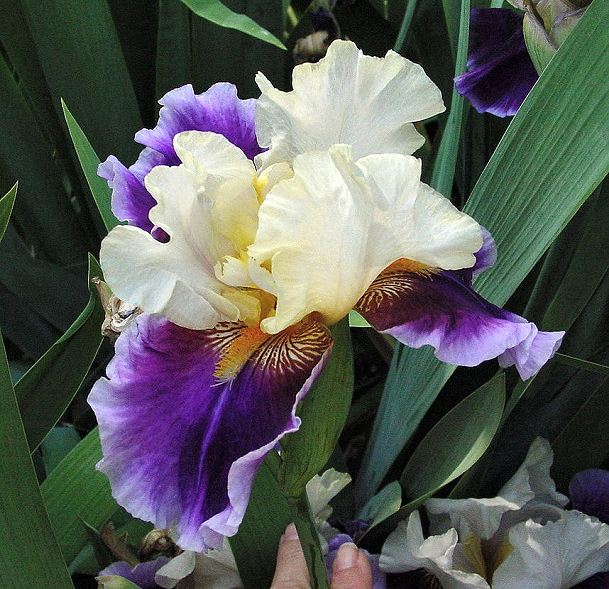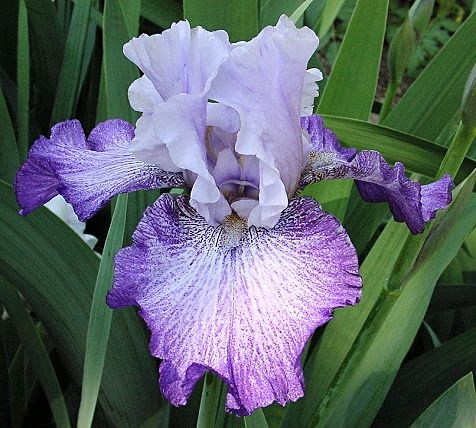----- Original Message -----
Sent: Thursday, January 13, 2005 7:49
AM
Subject: [iris-photos] TB:Seedling - with
veining color
In Chuck Chapman's post he has said something I
believe fundamental--and, clearly, so does he:
"When analysing a patern we need to break it doun
into component parts...."
A lot of our recent discussions on this list and
on Iris-talk have been about some not clearly understood color characteristics
and patterns. The AVI/AE discussion is a premium example of
this.
It is too easy to misunderstand the nature of
some color arrays and patterns we see in our modern hybrids. Just as an
example, let us consider "yellow amoenas." I believe there are at least
three (3) discrete, unrelated things going on in a yellow amoena:
1) First of all, the flower is either an RRA
(recessive reduced anthocyanin) or Dominant White (I) relative to
the blue-violet Delphinidin anthocyanin--one or the other. In some
unusual cases, it might even be a Progenitor (et al.) Dominant [anthocyanin]
amoena "I(s)" with some other issue reducing the anthocyanin in the
falls;
2) It must have all four doses (?) of the factor
that governs the DISTRIBUTION of the carotinoid (yellow, pink,
orange) pigment(s) in the falls, either as solid, banded (corona) solid, or
rayed, or "Joyce Terry" white banded with yellow (fall only, while drastically
if not completely preventing the pigment(s) expression in the standards
(note Margie Valenzuela's photo of TOUR DE FRANCE--a yellow amoena with a
flush of yellow up into the middle-base of the standards);
AND 3) at least one dose of what we have been
calling "Y," the mechanisms or sequences that produce carotenoid
pigments in the flower, regardless of pattern.
It is very easy to look at any pattern or color
we have that has a name (like "amoena" of any sort) and take off assuming it
to be the result of "a" gene. Genetics of irises--or any other living
thing--is not that simple. Most, if not all, are a combination of
component genetic processes--its "component parts" (note Chapman's
comment);
Taking the visible type (phenotype) and breaking
it down into its genetic components is the first step toward understanding
what it is, how it is to be understood, and how will
probably behave in a cross.
That is why it is important, as Chuck points out,
to note the phenotype (visible appearance) of the parents and grandparents,
where those are seedlings without published descriptions, AND of the
siblings in the cross.
Wouldn't it be fun to have an array of photos of
EVERY seedling from a cross? Especially fun if the cross had enough
seedlings to display the range of possibilities in the cross? With
digital photography this has become a lot easier than it was with slide or
print photography, and could make discussions such as have occured in the past
few days vastly easier.
Neil Mogensen z 7 western NC
mountains
Yahoo! Groups Links



